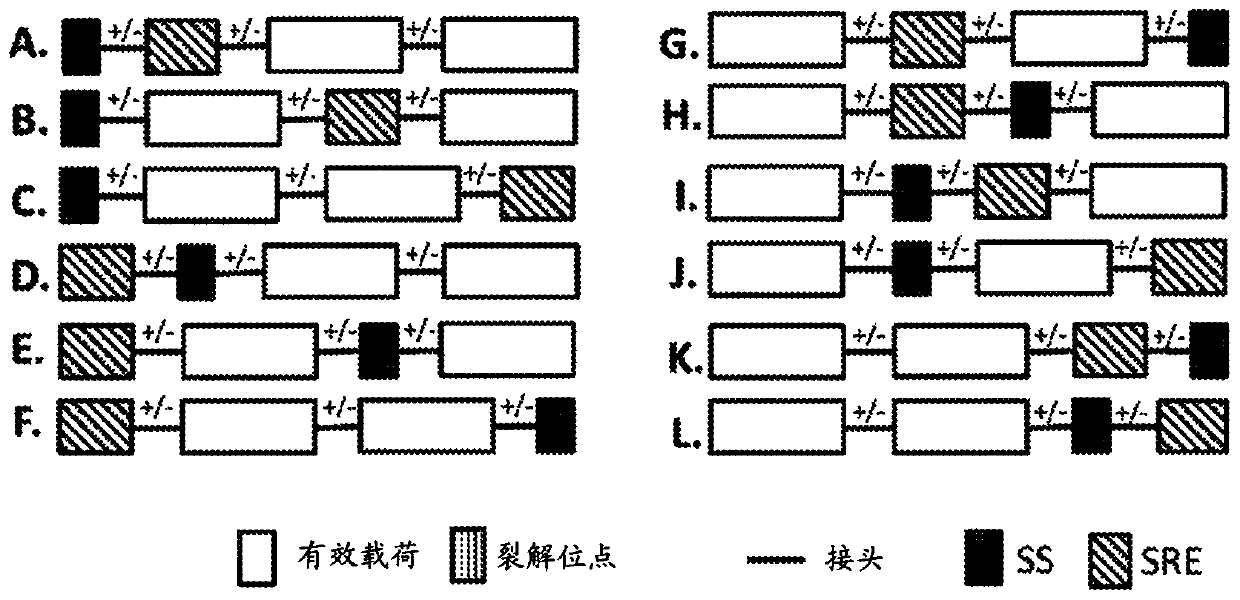Compositions and methods for immunotherapy
A composition and immunotherapy technology, applied in biochemical equipment and methods, chemical equipment and methods, drug combinations, etc., can solve problems such as off-target toxicity
- Summary
- Abstract
- Description
- Claims
- Application Information
AI Technical Summary
Problems solved by technology
Method used
Image
Examples
preparation example Construction
[0245] The preparation of antibodies, whether monoclonal antibodies or polyclonal antibodies, is known in the art. Techniques for producing antibodies are well known in the art and are described in, for example, Harlow and Lane "Antibodies, A Laboratory Manual", Cold Spring Harbor Laboratory Press, 1988; Harlow and Lane "Using Antibodies: A Laboratory Manual" Cold Spring Harbor Laboratory Press , 1999 and "Therapeutic Antibody Engineering: Current and Future Advances Driving the Strongest Growth Area in the Pharmaceutical Industry" Woodhead Publishing, 2012.
[0246] Recombinant polynucleotides can be used to produce antibodies and fragments and variants thereof as described herein. In one embodiment, the polynucleotide has a modular design that encodes at least one of an antibody, fragment or variant thereof. As a non-limiting example, the polynucleotide construct can encode any of the following designs: (1) antibody heavy chain; (2) antibody light chain; (3) antibody heavy and...
Embodiment 1
[0672] Example 1. Generation of novel ligand-responsive SRE or DD through mutagenesis screening
[0673] Research design
[0674] In order to engineer a construct that exhibits ligand-dependent stability, a candidate ligand binding domain (LBD) was selected, and a cell-based screen using yellow fluorescent protein (YFP) as a reporter of protein stability was designed to Identification of candidate LBD mutants with the desired characteristics of the destabilizing domain: low protein levels (ie, low basic stability) in the absence of LBD ligands, large dynamic range, robust dose-response behavior, and reliable The prediction and degradation kinetics are fast (Banaszynski et al., (2006) Cell; 126(5):995-1004). The candidate LBD binds the desired ligand, but not the endogenous signaling molecule.
[0675] First, a combination of nucleic acid analogue right and error-prone PCR is used to mutate the candidate LBD sequence (as a template) to generate a mutant library based on the templat...
Embodiment 2
[0683] Example 2. DD regulates the expression of recombinant IL2
[0684] FKBP (L106P) and ecDHFR (R12Y, Y100I) are well-characterized destabilizing domains that can impart instability to fusion partners (eg, POI). This instability is reversed by a synthetic ligand called Shield-1 that binds to FKBP DD and a synthetic ligand called TMP or MTX that binds to DHFR DD. Link the IL2 polypeptide to FKBP (F36V; L106P) or ecDHFR (R12Y, Y100I). The IL2 construct was packaged into the pLVX-IRES-Puro lentiviral vector. The IL2 signal sequence was inserted at the N-terminus of the construct, and the linker was placed between the signal sequence DD and IL2.
[0685] OT-IL2-001 (FKBP) was transduced into the human colorectal cancer strain HCT-116. To measure the dependence of IL2 levels on the dose of Shield-1, cells were plated on 96-well plates and treated with different concentrations of Shield-1. The culture medium was then collected from the cells and IL2 ELISA was used to quantify IL2...
PUM
 Login to View More
Login to View More Abstract
Description
Claims
Application Information
 Login to View More
Login to View More - R&D
- Intellectual Property
- Life Sciences
- Materials
- Tech Scout
- Unparalleled Data Quality
- Higher Quality Content
- 60% Fewer Hallucinations
Browse by: Latest US Patents, China's latest patents, Technical Efficacy Thesaurus, Application Domain, Technology Topic, Popular Technical Reports.
© 2025 PatSnap. All rights reserved.Legal|Privacy policy|Modern Slavery Act Transparency Statement|Sitemap|About US| Contact US: help@patsnap.com



